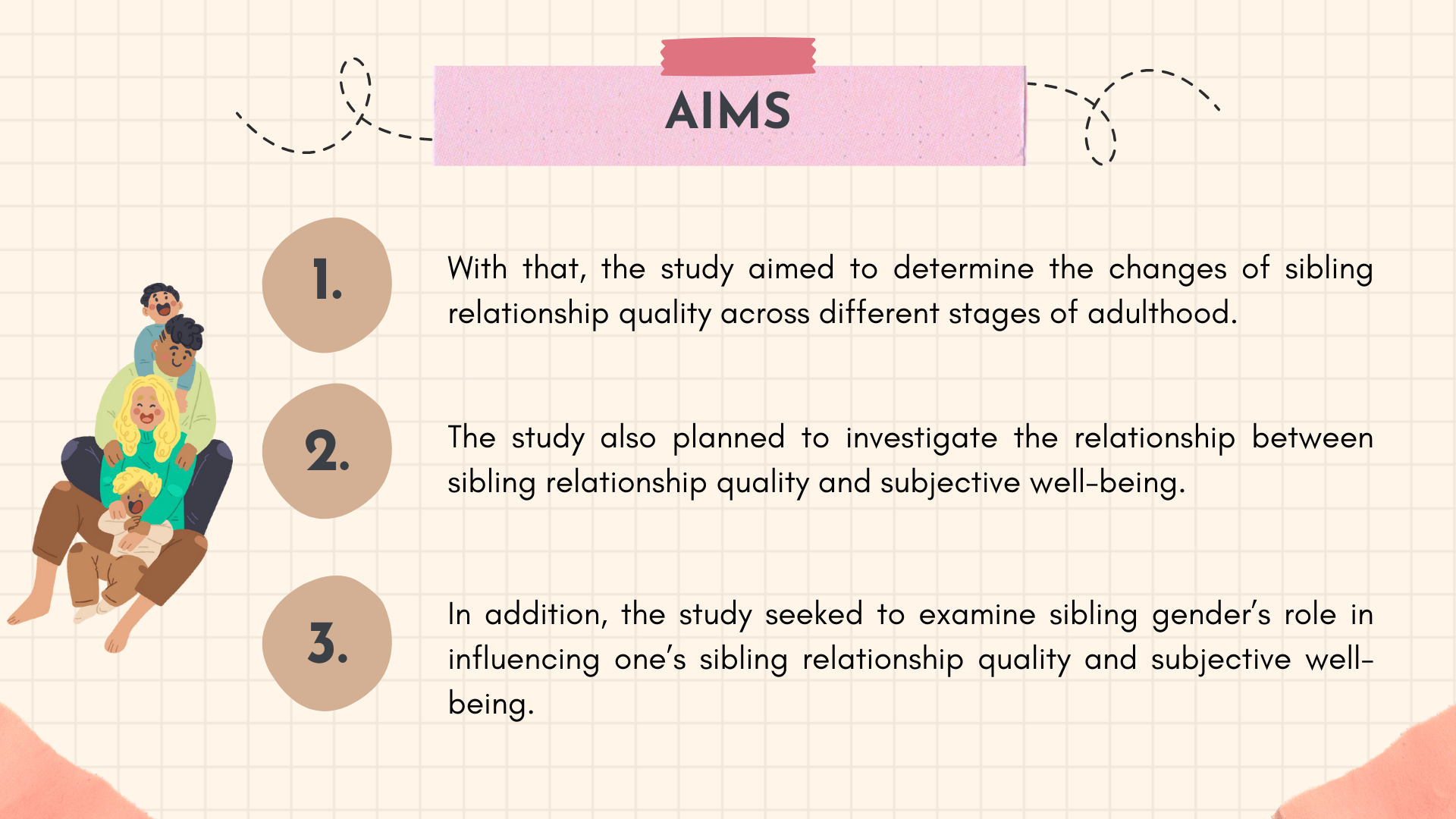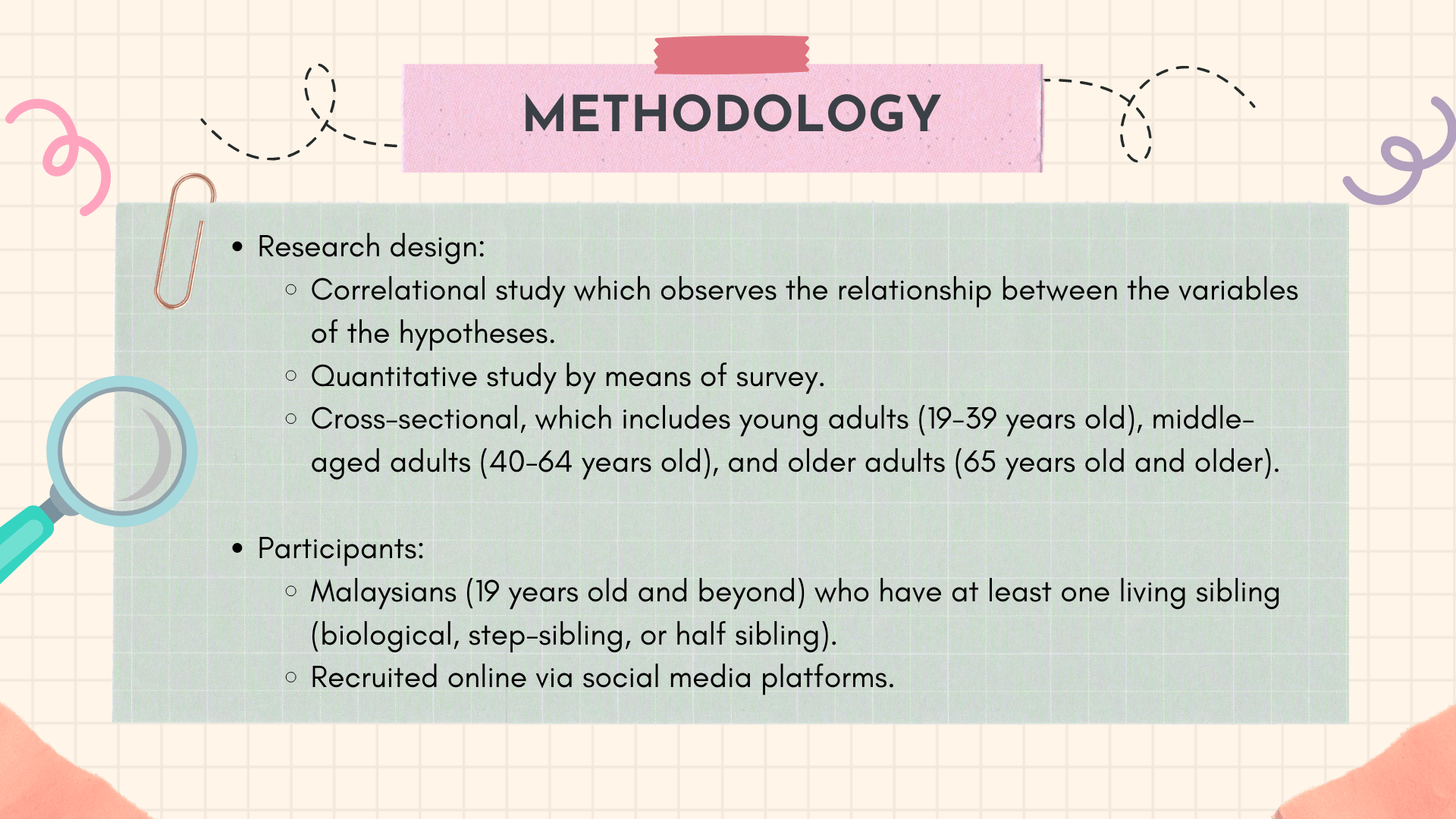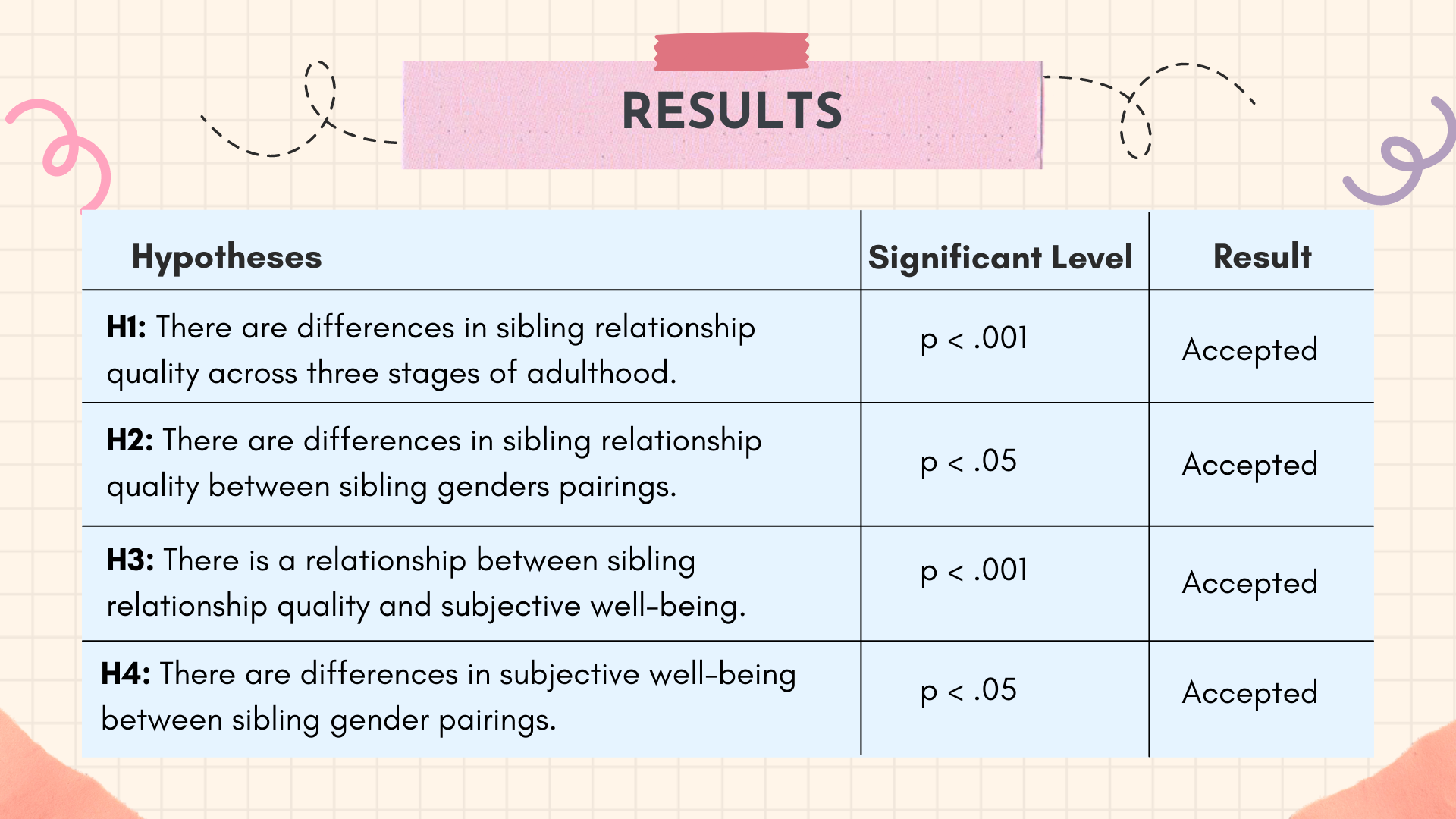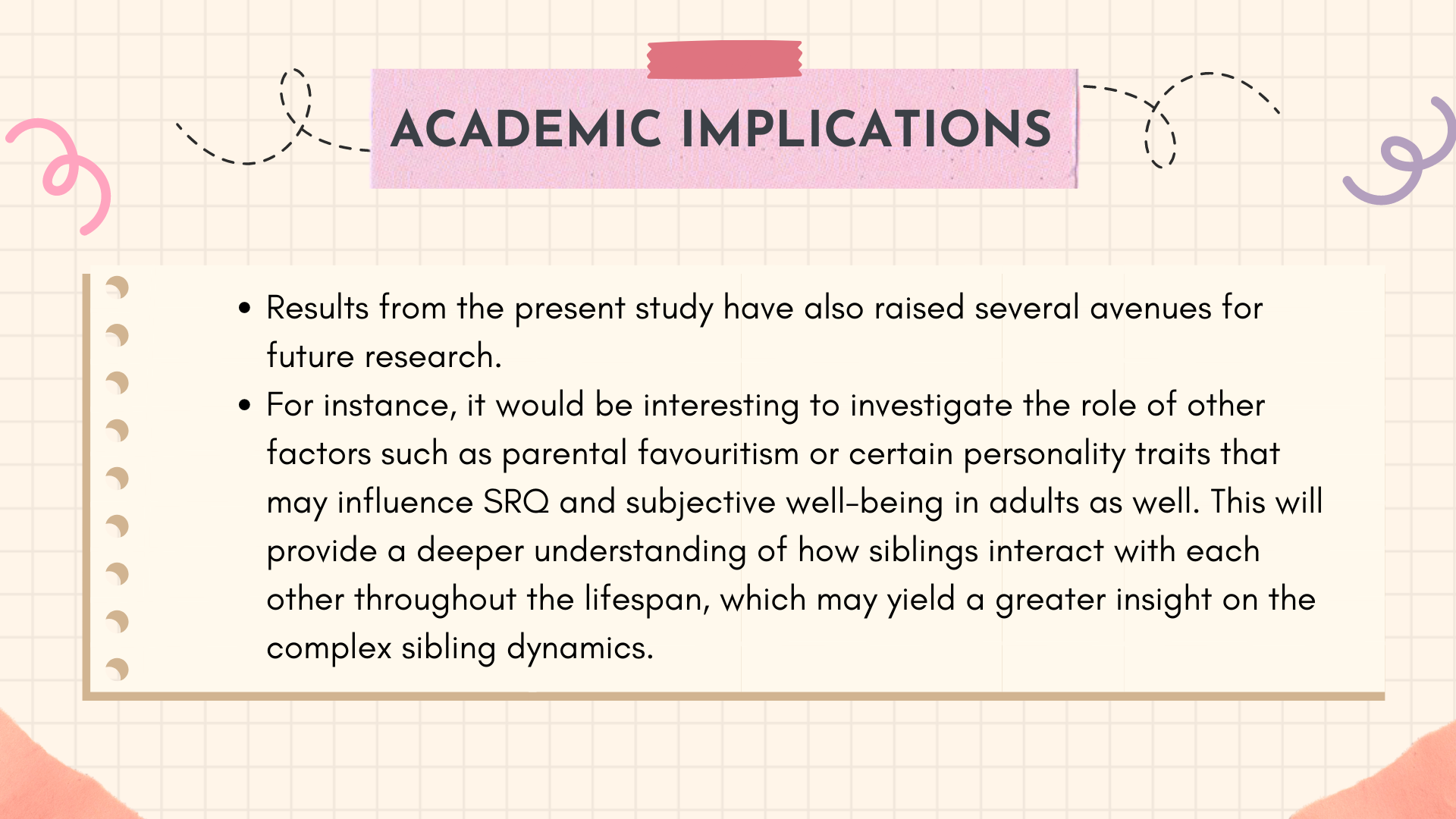
Chelsy Wee
Sibling relationship is one of the longest-lasting social relationships in a person’s life. However, studies regarding sibling relationships in adulthood are relatively limited. Using the Life Course Theory, a cross-sectional qualitative study was conducted to identify the development of sibling relationship quality (SRQ) across stages of adulthood (young, middle, and older adulthood) and different sibling gender pairings. The study also examined the associations between SRQ and subjective well-being, and the differences in subjective well-being among different sibling gender pairings. A total of 209 Malaysian adults were recruited through social media platforms and were asked to complete two questionnaires, the Lifespan Sibling Relationship Scale, and the Subjective Well-Being — Short Scale. Statistically significant differences were found, in which older adults reported the highest SRQ compared to younger and middle-aged adults. Additionally, a significant positive relationship was found between SRQ and subjective well-being. In terms of sibling gender, same-sex sibling pairings have higher reports of SRQ, and subjective well-being compared to different-sex sibling pairings. These findings suggest that SRQ changes across different adult life stages, and that siblings play an important role in one’s subjective well-being. The findings also underline the importance of sibling gender pairings in determining SRQ and subjective well-being.

Chelsy Wee Wee
Acknowledgments
I would like to thank the following people, without whom I would not complete my research project. Firstly, I would like to thank my supervisor Ms. Elaine Yong, whose detailed guidance and lightning-speed feedback has helped me improve my research-writing technique to an unthinkable degree. Her immense patience and knowledge have inspired me to do better throughout the research project and even in my daily life. I would also like to extend my gratitude to my friends and family, whose limitless emotional support and aid in data collection has helped me complete my final year project on time. My project would not be what it is today without them.References
Doron, H., & Sharabi-Nov, A. (2016). Siblinghood, gender, and families: Are sisters more close and unified than brothers? The Family Journal, 24(4), 385–394. https://doi.org/10.1177/1066480716663174 Gray, A. (2008). The social capital of older people. Ageing and Society, 29(1), 5–31. https://doi.org/10.1017/s0144686x08007617 Litwin, H., & Stoeckel, K. J. (2012). Social networks and subjective wellbeing among older Europeans: does age make a difference? Ageing and Society, 33(7), 1263–1281. https://doi.org/10.1017/s0144686x12000645 Myers, D. G. (2004). Human connections and the good life: Balancing individuality and community in public policy. Positive psychology in practice, 641-657 Riggio, H. R. (2000). Measuring attitudes toward adult sibling relationships: The lifespan sibling relationship scale. Journal of Social and Personal Relationships, 17(6), 707-728 Røysamb, E., Harris, J. R., Magnus, P., Vittersø, J., & Tambs, K. (2002). Subjective well-being. Sex-specific effects of genetic and environmental factors. Personality and Individual Differences, 32(2), 211–223. doi:10.1016/s0191-8869(01)00019-8 Ryff, C. D. (1995). Psychological well-being in adult life. Current Directions in Psychological Science, 32, 119–128.








































